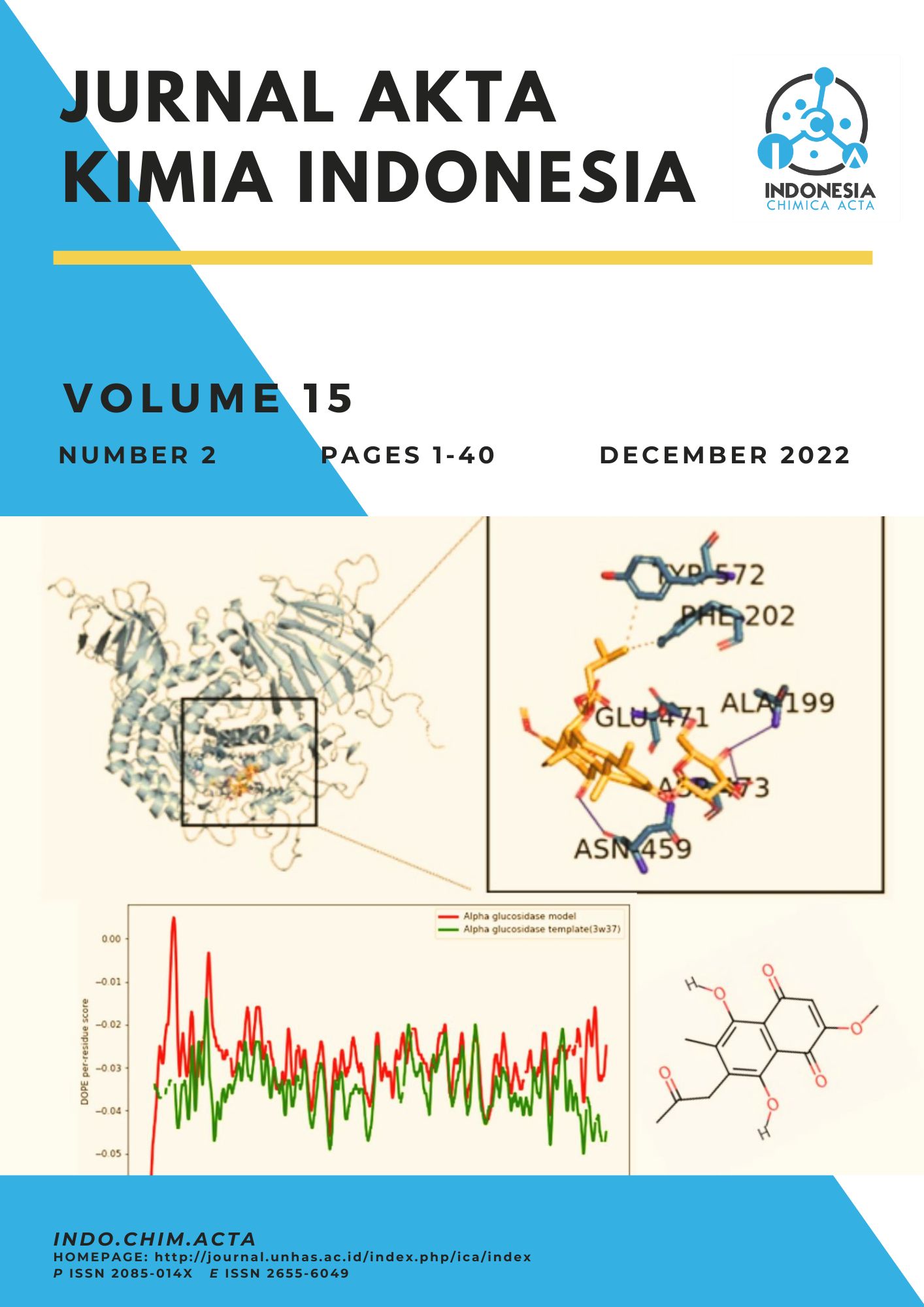Main Article Content
Abstract
Diabetes is one of the emergency diseases worldwide due to the large case each year. Therefore, searching the potential treatment become crucial to treating the disease. In this research, homology modeling and molecular docking were employed to analyze the active compounds of Makassar fruit (Brucea javanica) as antidiabetic. Alpha glucosidase (AG) is used as a target, and the ligands are javanicin and javanicisode B, both active molecules of Brucea javanica. According to molecular docking results, all ligands have the potential to bind to the receptor because of their negative energy scores. Also, javanicin has higher binding energy (-8.0 kcal/mol) than the control (-5.7 kcal/mol). Furthermore, hydrogen bonds and hydrophobic interactions allow these two active chemicals to attach to an important location on AG. Thus, our finding implied that two active compounds of Brucea Javanica could be inhibitors for the receptor, and javanicin may become a promising drug against diabetes.
Article Details

This work is licensed under a Creative Commons Attribution-ShareAlike 4.0 International License.
How to Cite
Arwansyah, A., Sangkota, V. D. A., Ahmar, D. S. ., Magfirah, M., Sirajuddin, K. N. ., Restafara , A., & Arif, A. R. . (2022). Pharmacology Analysis of The Active Compound of Makassar Fruit (Brucea Javanica) as Antidiabetic Via Bioinformatics Approach. Jurnal Akta Kimia Indonesia (Indonesia Chimica Acta), 15(2), 1-8. https://doi.org/10.20956/ica.v15i2.21043
